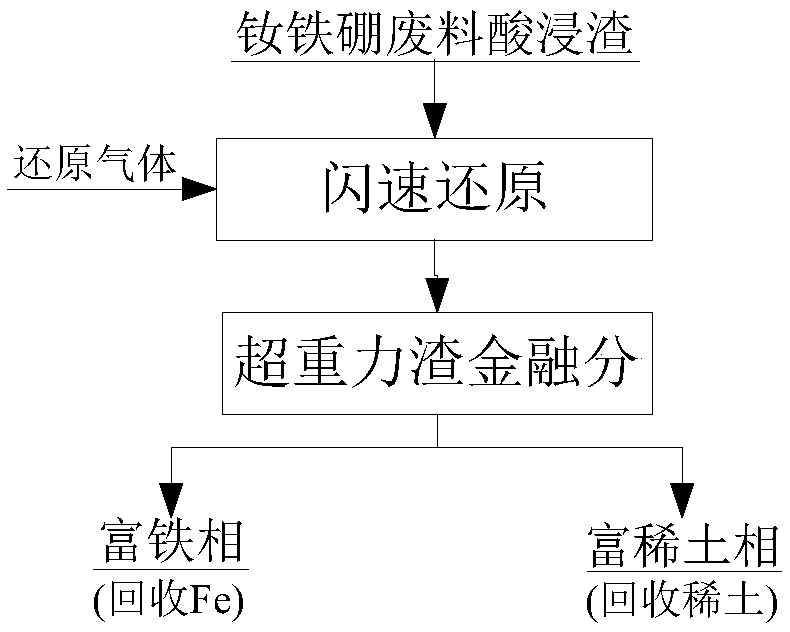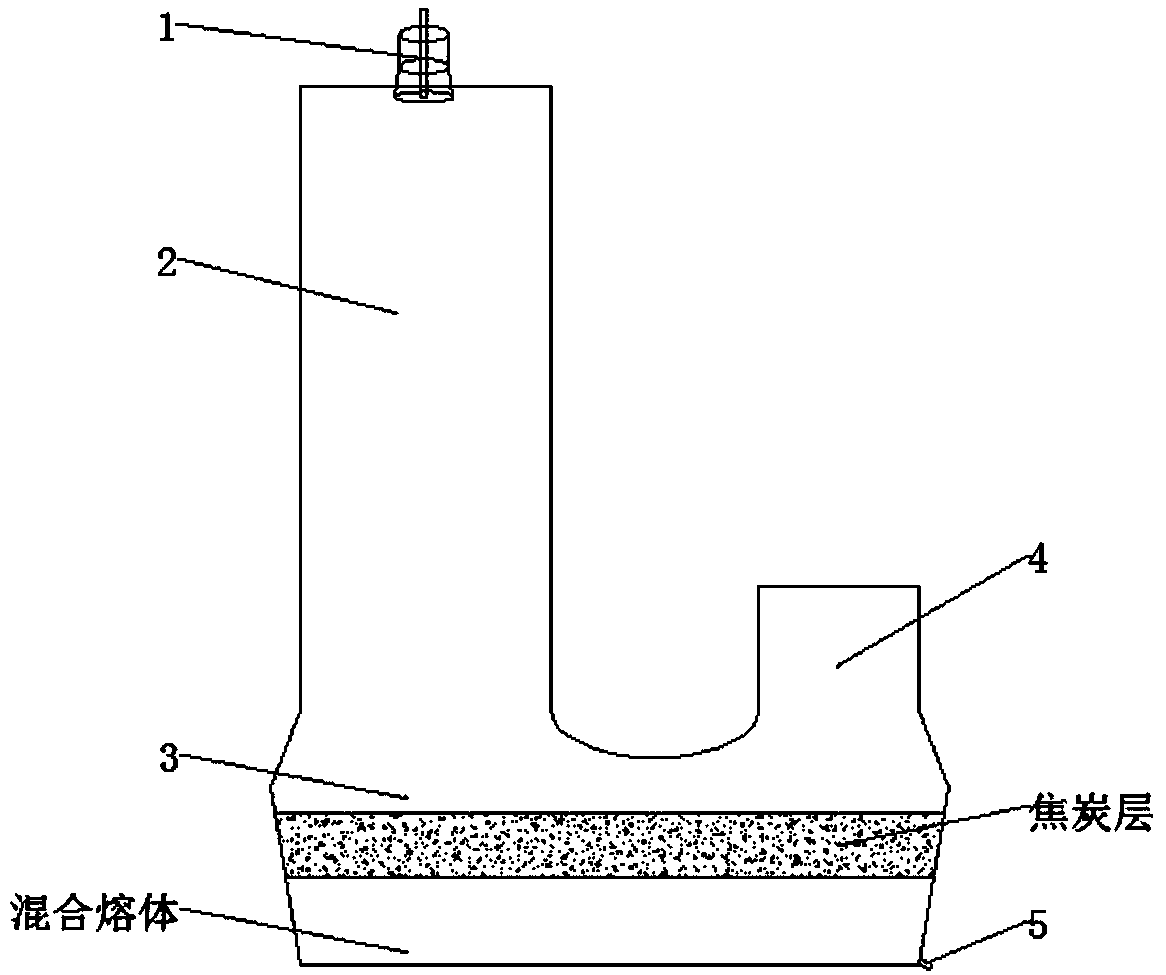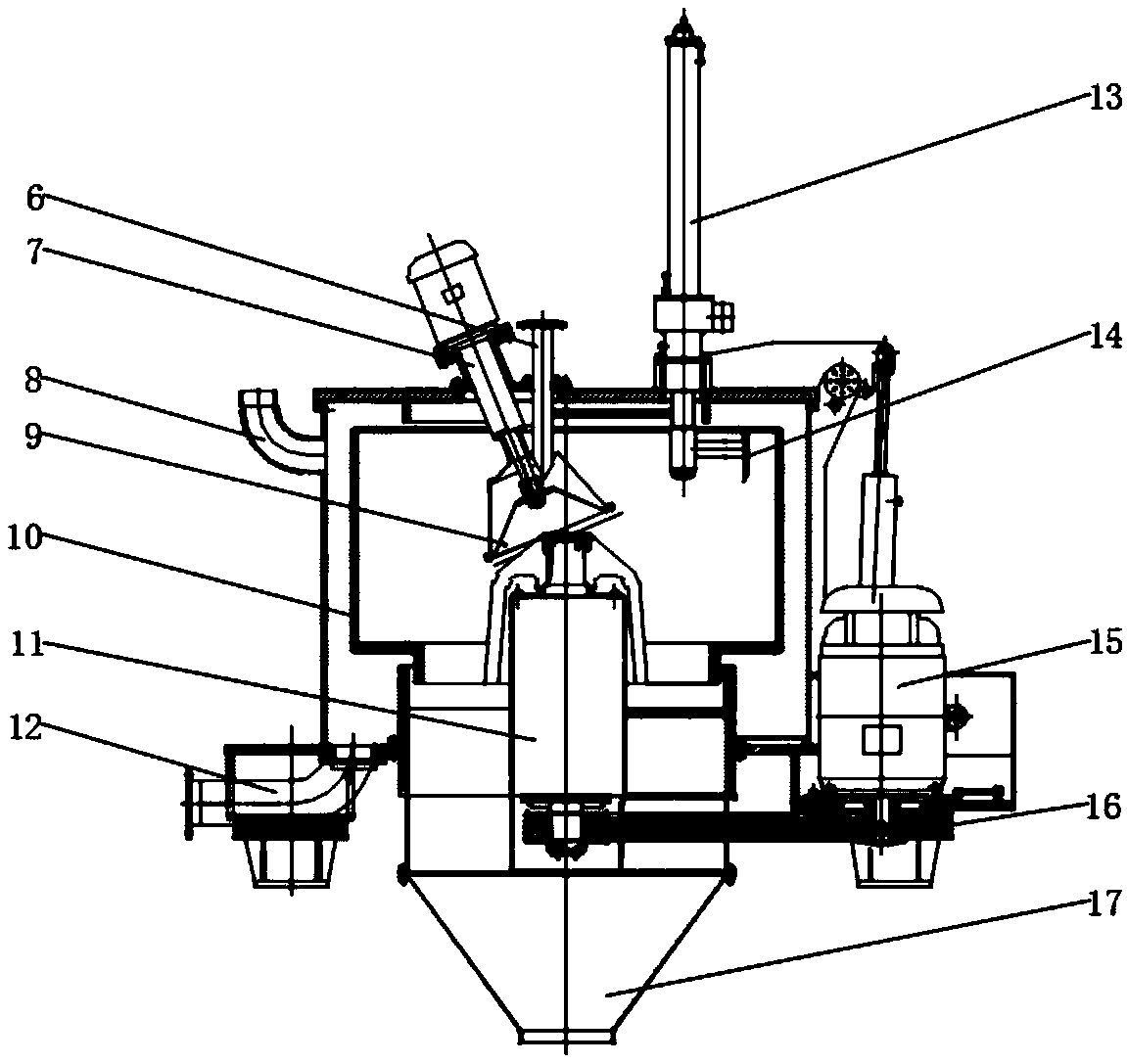Neodymium iron boron waste acid-leaching slag flashing-reduction super-gravity metal-slag melting and separating comprehensive recycling method
A technology of waste acid and NdFeB, applied in the direction of improving process efficiency, etc., can solve the problems of no comprehensive utilization method, high equipment requirements, lengthy process, etc., and achieve good promotion and application value, accurate atmosphere control, and large processing capacity Effect
- Summary
- Abstract
- Description
- Claims
- Application Information
AI Technical Summary
Problems solved by technology
Method used
Image
Examples
Embodiment 1
[0027] After mixing the acid leaching slag of powdered NdFeB waste with a particle size of 100 mesh and CaO powder with a weight of 6% of the slag, spray it together with hydrogen into a reaction tower with a height of 3.5 meters and a temperature of 1200 °C through the nozzle (1) (2), the material is in a highly dispersed floating state and falls from the upper end of the reaction tower to the lower end. During this process, the reaction atmosphere is controlled so that the oxygen partial pressure is 10 -16 Atm, 63.5% of the iron oxides in the feed were reduced to metallic iron, while the rare earth oxides in the feed were not reduced. When the high-temperature melt obtained from reduction in the reaction tower falls to the sedimentation tank (3) below the reaction tower, it passes through the hot coke layer at 1350°C above the sedimentation tank, and the unreduced iron oxides are further reduced to metallic iron , At this time, the total reduction rate of iron reaches 99.5%....
Embodiment 2
[0030] The powdery NdFeB waste acid leaching slag with a particle size of 200 mesh and 5% SiO by slag weight 2 After the powder is mixed, it is sprayed together with hydrogen into a reaction tower (2) with a height of 5.5 meters and a temperature of 1300°C through a nozzle (1). In the reaction atmosphere, control the reaction atmosphere so that the oxygen partial pressure is 10 -18 Atm, 72.6% of the iron oxides in the feed were reduced to metallic iron, while the rare earth oxides in the feed were not reduced. When the high-temperature melt obtained by reduction in the reaction tower falls to the sedimentation tank (3) below the reaction tower, it passes through the hot coke layer at 1450°C above the sedimentation tank, and the unreduced iron oxides are further reduced to metallic iron , At this time, the total reduction rate of iron reaches 99.6%. The high-temperature mixed melt of molten iron and rare earth slag is discharged continuously or periodically from the outlet (5...
Embodiment 3
[0033] The powdery NdFeB waste acid leaching slag with a particle size of 300 mesh and 3% SiO by slag weight 2 Powder and 2% CaO powder are mixed, sprayed together with carbon monoxide gas from the nozzle (1) into a reaction tower (2) with a height of 8.5 meters and a temperature of 1300°C, and the materials are in a highly dispersed floating state from the upper end of the reaction tower Float to the lower end, during this process, control the reaction atmosphere, so that the oxygen partial pressure is 10 - 20 Atm, 85.3% of the iron oxides in the feed were reduced to metallic iron, while the rare earth oxides in the feed were not reduced. When the high-temperature melt obtained from the reduction in the reaction tower falls to the sedimentation tank (3) below the reaction tower, it passes through the hot coke layer at 1550°C above the sedimentation tank, and the unreduced iron oxide is further reduced to metallic iron , At this time, the total reduction rate of iron reaches...
PUM
 Login to View More
Login to View More Abstract
Description
Claims
Application Information
 Login to View More
Login to View More - R&D
- Intellectual Property
- Life Sciences
- Materials
- Tech Scout
- Unparalleled Data Quality
- Higher Quality Content
- 60% Fewer Hallucinations
Browse by: Latest US Patents, China's latest patents, Technical Efficacy Thesaurus, Application Domain, Technology Topic, Popular Technical Reports.
© 2025 PatSnap. All rights reserved.Legal|Privacy policy|Modern Slavery Act Transparency Statement|Sitemap|About US| Contact US: help@patsnap.com



